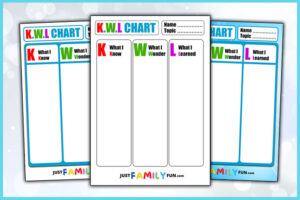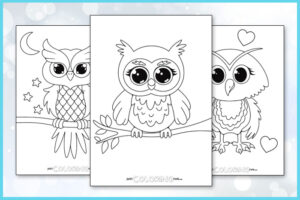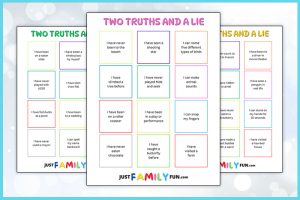
Free Printable KWL Chart
Learning how to think around topics they find complicated is of immeasurable importance for children, particularly as they’re growing. Using a KWL Chart can help students of
Learning how to think around topics they find complicated is of immeasurable importance for children, particularly as they’re growing. Using a KWL Chart can help students of all ages to log and organise thought processes.
A KWL chart is a simple yet powerful tool that helps children organize their thoughts while exploring new or confusing topics. It includes three columns: What I Know, What I Wonder, and What I Learned. As students move through a topic or research project, they fill in each section, which encourages active thinking and deeper understanding.
Teachers can use KWL charts with individual students to support learning across the curriculum. A great way to make it more engaging is by allowing children to log their own personal thoughts—whether it’s wondering why a snail is so slow or thinking about what they want to be when they grow up.
With a KWL chart, children feel a sense of ownership over their learning. They begin to see the world around them as a classroom, filled with lessons waiting to be discovered—which is exactly what we love to encourage at Just For Fun.
KWL charts can be used in multiple teaching activities. From science, where they’re first learning how to run experiments, to math, where they’re struggling to understand a theorem. Teachers will have greater understanding of what their students need help with, and the children themselves will be able to quickly recall a topic’s details, as they’d have their personalized quick notes always to hand.
All the printables on our site are free, as we believe in sharing the tools that children need to excel – on a global scale! Feel free to download our blank KWL chart and use it in your classroom, home or temple.
Involving students in an active form of creative learning will go far towards increasing their interest in learning new things and education as whole. While the Know-Wonder-Learned Chart is simple, it is incredibly effective. Children spend an inordinate amount of time being taught, but using a chart like this, they find that they themselves enjoy being their own teachers. They are writing their lessons, not a smelly grown up.
KWL charts are flexible. There is no particular technique involved, and students will write their own notes and thoughts. IF you find a child struggling, it might be helpful to give them a title or subject.
Teachers and guardians can track the learning stages of a student, and use that knowledge to help them learn more topics. In the first column, students write their prior knowledge regarding a topic. They are then encouraged to think about the subject and their existing knowledge, and to log those thoughts as well. When they’ve learnt something at the end, they write it in the final column.
While it may not seem it at first, this will set your child or students up for future academic achievements. Dissertations, articles, blogs, research papers etc all use this exact system. An initial section detailing current research and studies existing on the topic, then the question that is being sought to answer and finally the conclusion. This is exactly how a research paper is formatted. The KWL Chart is a research paper in its infancy, but it’s a great start.
Teachers should monitor a child’s KWL Chart, their improvement or struggles after comparing their prior knowledge to their research. Some students will find it easier to communicate their ideas or thoughts about a topic through the chart.
A great use of the KWL Chart is Educational Recall. Students can use their KWL charts when preparing for a test or finishing assignments. Using the charts will help them to focus on the parts of topics that they had struggled with initially rather than reviewing concepts they already understand. Particularly when they are short of time. They can even create fresh ones to further their knowledge on the same topic, maintaining a file for it as their knowledge grows.
The KWL chart is an effective tool that helps children to harness their creative learning capabilities. It can help with improving comprehension skills overall. KWL charts are very easy to utilise, and will likely become a core part of your child’s learning process.
If you enjoy fun and creative printables, be sure to check out our 10 Printable Road Trip Scavenger Hunt — it’s another great way to keep kids entertained and engaged!

Learning how to think around topics they find complicated is of immeasurable importance for children, particularly as they’re growing. Using a KWL Chart can help students of

Owl Coloring Pages Owls are fascinating creatures that have captured the imagination of people for centuries. It’s no wonder that owl coloring pages have become such a

Two truths and a lie is a great icebreaker and a really fun game to play with friends and family. Kids can get the chance to